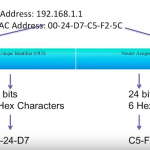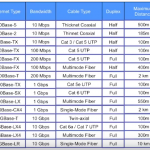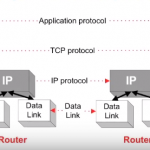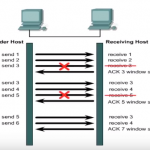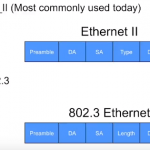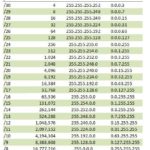https://www.youtube.com/watch?v=a_QTzQtu2zg In this lesson we're going to revisit the data link layer and the data link layer is the first layer where devices receive an address. This layer defines how data is formatted for transmission and how access to the network is controlled and this is the layer that switches operate at. So, let's explore that further. At layer 2, we … [Read more...]
Understanding IEEE 802 Protocols
Until now we've talked a lot about the Ethernet Protocol, but we have not necessarily explored the media types which are defined by the ethernet standards. There are multiple modes of communication as well as media types relating to Ethernet that we will cover in this chapter. All of which are topics on the CCNA exam. Modes of Communication First let's discuss some … [Read more...]
Operation of IP Data Networks
The IP protocol or internet protocol is the principal communications protocol in the Internet Protocol suite. It's used for relaying datagrams across network boundaries. Its routing function enables internetworking and essentially establishes the internet. IP is the primary protocol in the internet layer of the Internet Protocol suite has the task of delivering packets … [Read more...]
Examining the Operation of TCP
To establish a connection TCP uses a three-way handshake. Before a client attempts to connect with a server, the server must first bind to and listen at a port to open it up for communications. This is called the passive open. Once the passive open is established a client may initiate an active open to establish a connection the three-way or three-step handshake occurs. TCP … [Read more...]
200-125 CCNA Exam Topics
Cisco Certified Network Associate (200-125) 1.0 Network Fundamentals 1.1 Compare and contrast OSI and TCP/IP models 1.2 Compare and contrast TCP and UDP protocols 1.3 Describe the impact of infrastructure components in an enterprise network 1.3.a Firewalls 1.3.b Access points 1.3.c Wireless controllers 1.4 Describe the effects of cloud resources on … [Read more...]
Basics of Ethernet
Ethernet refers to the family of LAN products covered by the IEEE 802.3 standard that defines a carrier sense multiple access collision detection protocol or CSMA/CD. Data rates are currently defined for operation over optical fiber and twisted pair cables. 10Base2 Ethernet that supports 10megabits per second. (10Mbps) Fast Ethernet that supports 100 megabits per … [Read more...]
Interface speed specifications on MX series routers
Interface speed specifications on MX series routers This article outines the ethernet interface speed specifications on MX series routers M series and T series routers that have gigabit ethernet interfaces are not capable of supporting a speed of 10M or 100M. They always default to 1000M (1gig) On MX series routers however, the speed can be set to 10/100/1000 by using the … [Read more...]
Upgrade Mixed Mode Virtual Chassis – Juniper Ex
How to upgrade a mixed mode virtual chassis - Juniper Ex Here is the Step by Step Procedure to upgrade a mixed mode virtual chassis on a EX4200 and EX4550/4500 switch. Step 1: Download the Junos software packages for both chassis. www.juniper.net/support/downloads/junos.html For additional information you can … [Read more...]
MPLS BGP VPN’s not supported accross un-numbered interfaces
MPLS BGP VPN's not supported across un-numbered interfaces. When using an un-numbered interface between PE and P routers instead of IP numbered interfaces, the ERX no longer displays VPN routes and shows the next hop address and unreachable even though ICMP Pings to the next hop address are successful. Platform: Juniper E-Series show ip bgp vpn vrf test 192.168.2.0 BGP … [Read more...]
Solving Subnetting Questions for the Cisco CCNA
Solving Subnetting Questions for the Cisco CCNA … [Read more...]
